Avocet, Kluut, Säbelschnäbler, Alfaiate, Avoceta Común
Spotted in the Alentejo region of Portugal. Avocet sound
The Avocet or Pied Avocet beçongs to the four species of avocets and are a genus, Recurvirostra, of waders in the same avian family as the stilts.
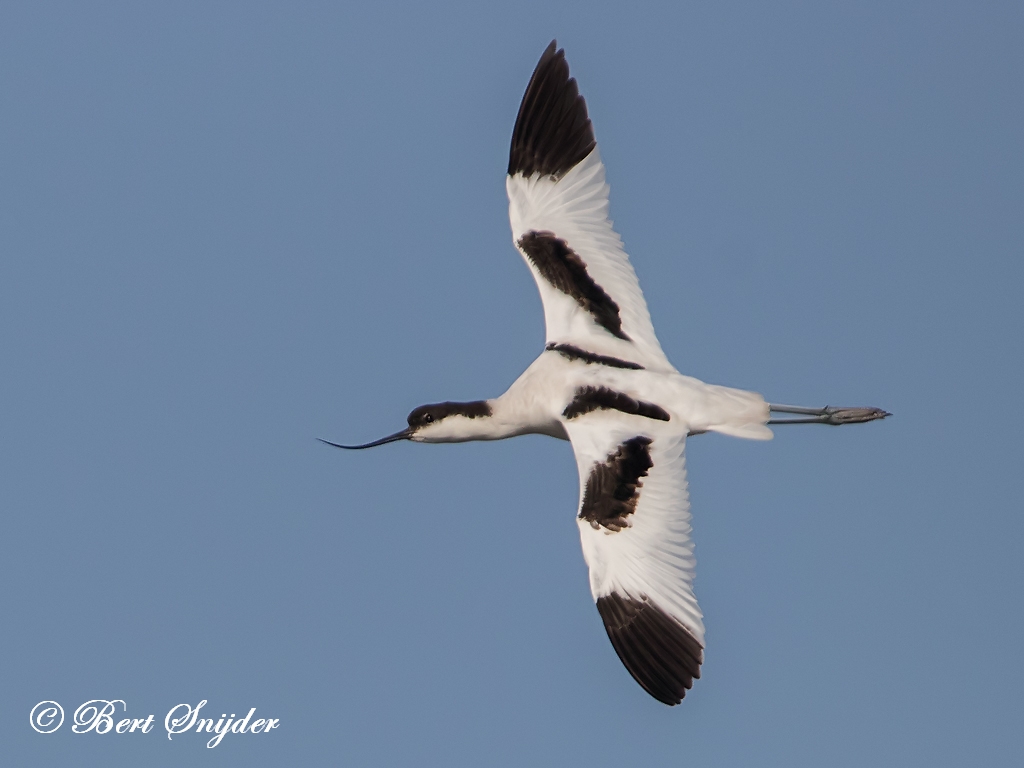
More photos at the bottom of this page.
Avocets have long legs and long, thin, upcurved bills (giving their scientific name Recurvirostra) which they sweep from side to side when feeding in the brackish or saline wetlands they prefer. The plumage is pied, sometimes also with some red.
Members of this genus have webbed feet and readily swim. Their diet consists of aquatic insects and other small creatures. They nest on the ground in loose colonies. In estuarine settings they may feed on exposed bay muds or mudflats.
The Pied Avocet is the emblem of the Royal Society for the Protection of Birds.
The four species, all in the genus Recurvirostra, are:
Pied Avocet, Recurvirostra avosetta
American Avocet, Recurvirostra americana
Red-necked Avocet, Recurvirostra novaehollandiae
Andean Avocet, Recurvirostra andina
In a large colony they are aggressively defensive and chase off any other species of birds that try to nest among or near them. That causes the annoyed remark “Avocet : Exocet” from some British birdwatchers.
They had been extinct in Britain for a long time because of land reclamation of their habitat and persecution by skin and egg collectors, but during or soon after World War II started breeding on reclaimed land near the Wash which was returned to salt marsh to make difficulties for any landing German invaders.
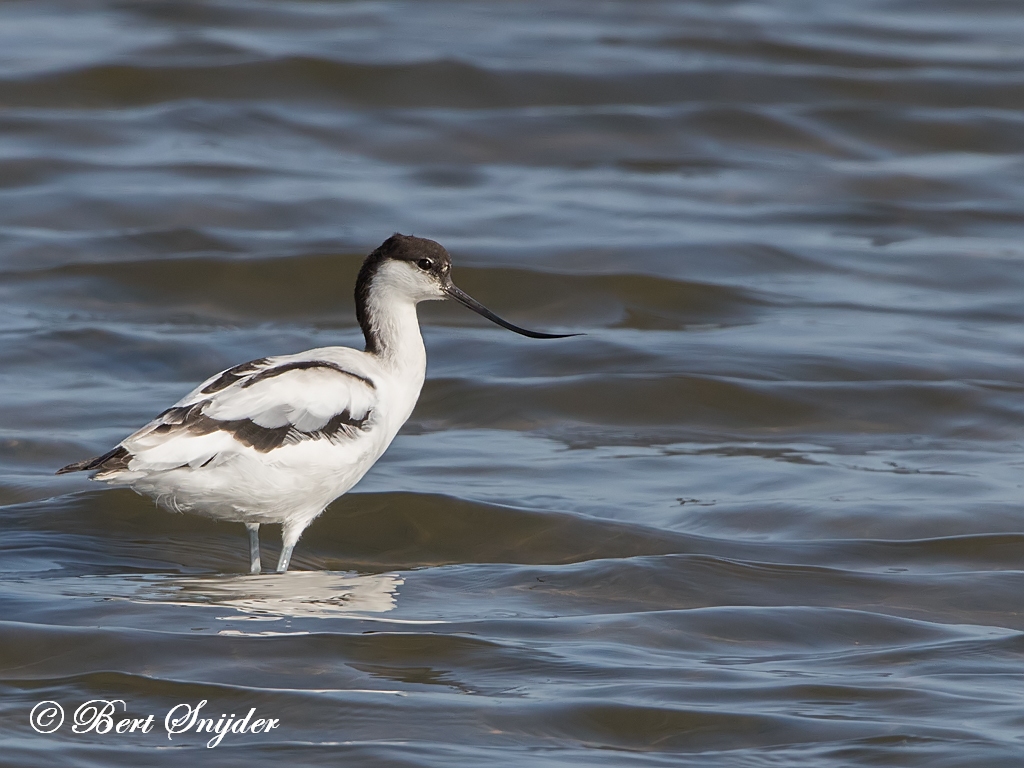
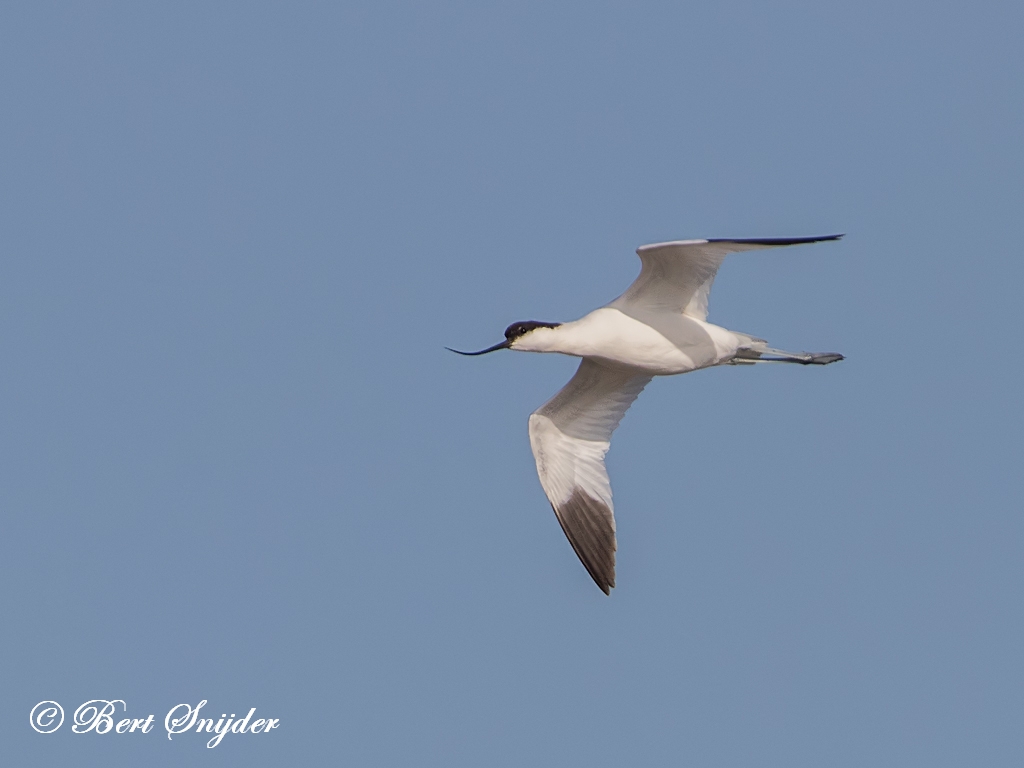
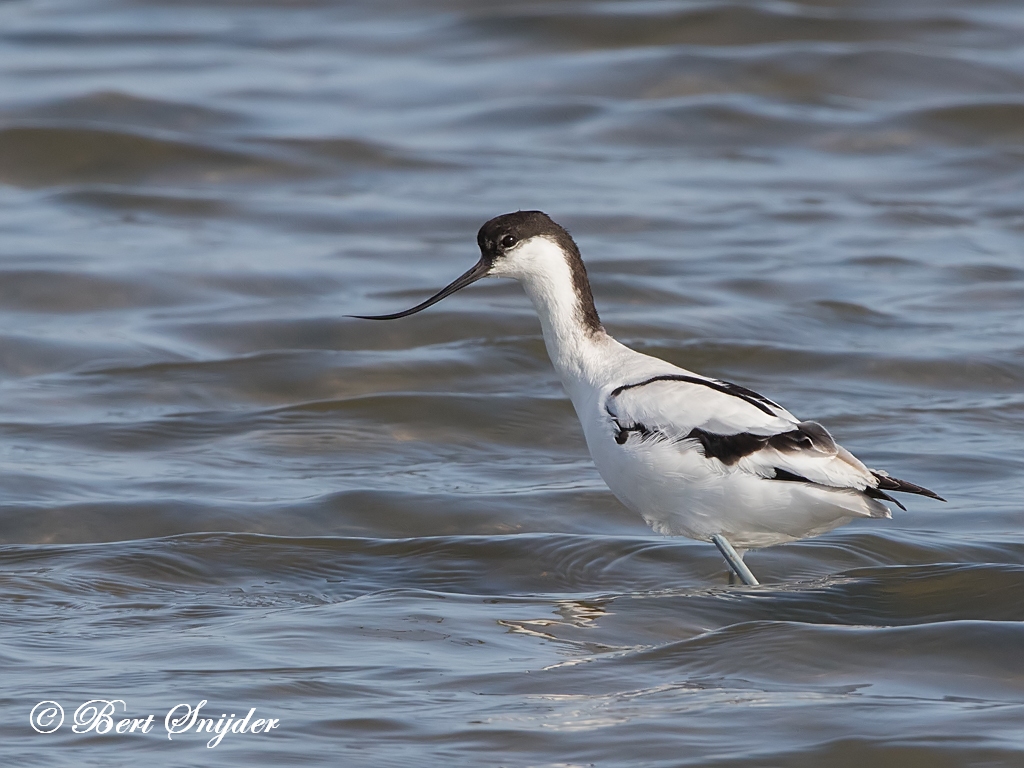
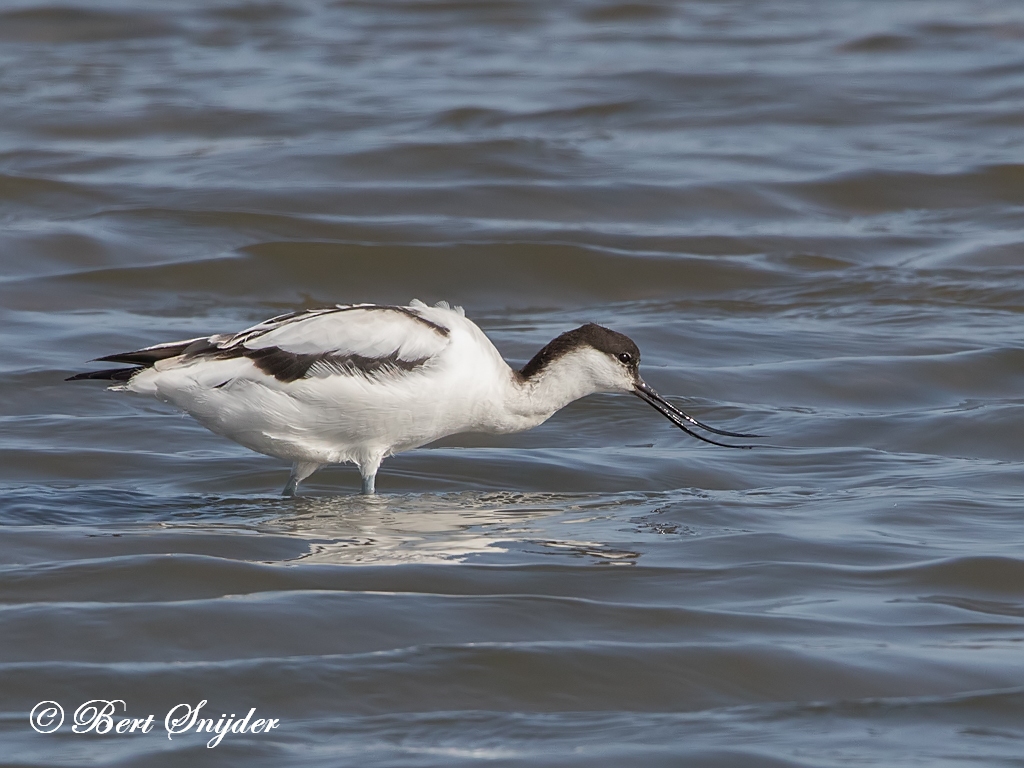


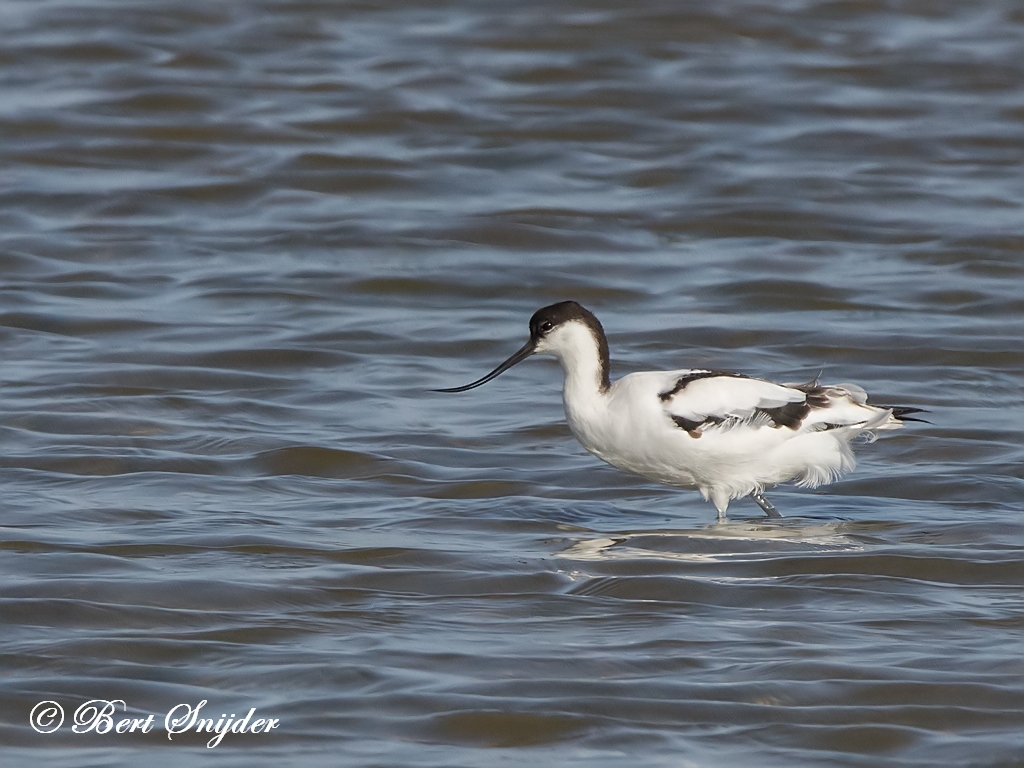
Other synonyms:
Afrikaans: Bontelsie
Asturian: Avoceta, Cigoñina Pinta
Azerbaijani: Bizdimdik
Breton: An avosetenn vistr, Avosetenn vistr, Seurezig
Catalan: Bec d’alena, Bec d’alena, Camallonga
Catalan (Balears): Bec d’alena
Valencian: Camallonga
Czech: Tenkozobec opacný, Tenkozobec opa?ný, tenkozobec opaèný
Welsh: Cambig, Pig mynawd, Y big mynawyd
Danish: Klyde
German: Säbelschnäbler, Saebelschnaebler
Emiliano-romagnolo: Gambitulon
English: Avocet, Black-capped Avocet, Eurasian Avocet, Pied Avocet
Esperanto: avoceto
Spanish: Avoceta, Avoceta Común
Estonian: Naaskelnokk
Basque: Abozeta, Bec d’alena
Finnish: Avosetti
Faroese: Nevfatti
French: Avocette, Avocette à manteau noir, Avocette à nuque noire, Avocette à tête noire, Avocette élégante
Frisian: Klút
Irish: Abhóiséad
Gaelic: Gob cearr
Galician: Avoceta, Bec d’alena
Manx: Gob kiare
Croatian: Modronoga Sabljarka
Hungarian: Gulipán
Icelandic: Bjúgnefja
Italian: Avocetta, Avocetta bianca e nera, Avocetta comune
Japanese: Sori-hashi sei-taka shigi, Sorihashi Seitaka-shigi, sorihashiseitakashigi, Sorihashi-seitaka-shigi
Cornish: Gelvyn menowes
Latin: Recurvirostra avosetta
Latvian: Avozeta
Maltese: Xifa
Dutch: Kluut
Norwegian: Avosett, Klyde
Polish: szablodziób, szablodziób (zwyczajny), Szablodziób zwyczajny
Portuguese: Alfaiate
Romansh: Gambun grond
Russian: Shiloklyuvka
Sardinian: Filippa, Nadrichedda, Paisanu
Scots: Gob cearr
Slovak: Éabliarka modronohá, Šabliarka modronohá
Slovenian: sabljarka
Albanian: Sqepbiza
Serbian: sabljarka
Swedish: Skärfläcka
Swahili: Msese domojuu
Travel Birdwatching Holiday Alentejo, Vacation Portugal for birders to see birds on your trip. Guided Birdwatching Tours & Trips.